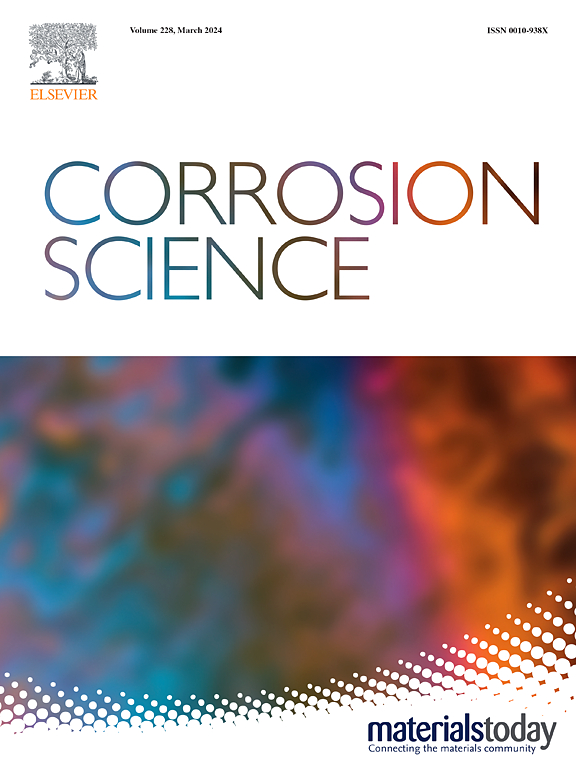An empirical model of the kinetics of hydrogen-induced cracking in pipeline steel, using statistical distribution models and considering microstructural characteristics and hydrogen diffusion parameters
IF 7.4
1区 材料科学
Q1 MATERIALS SCIENCE, MULTIDISCIPLINARY
引用次数: 0
Abstract
This study proposes an empirical model to predict the kinetics of hydrogen-induced cracking (HIC) growth rate in pipeline steels based on experimentally measured hydrogen diffusion parameters and spatial distribution of microstructural features previously identified to have a role on HIC kinetics. In the experimental work, the HIC was induced by electrochemical cathodic charging and the crack growth was monitored by ultrasonic inspection. Optical and scanning electron microscopy were used to determine the spatial distribution parameters of non-metallic inclusions, and the ferrite grain and second phase characteristics. The hydrogen microprint technique used to visualize hydrogen diffusion path in the microstructure and the hydrogen diffusion parameters were determined by hydrogen permeation tests. Results show that NMI shape affects HIC nucleation sites, using student's t-distribution, while ferrite grain characteristics affect HIC growth rates, with X70–2 and X56 steel plates recorded highest HIC growth rate. The Log-Normal distribution model, supported by statistical analysis, effectively predicts HIC growth rates compared with Weibull and Gamma distribution models.
使用统计分布模型并考虑微结构特征和氢扩散参数的管道钢氢致开裂动力学经验模型
本研究根据实验测得的氢扩散参数和以前确定的对氢致裂纹动力学有影响的微观结构特征的空间分布,提出了一个预测管道钢中氢致裂纹(HIC)生长率动力学的经验模型。在实验工作中,通过电化学阴极充电诱导 HIC,并通过超声波检测监控裂纹生长。光学显微镜和扫描电子显微镜用于确定非金属夹杂物的空间分布参数以及铁素体晶粒和第二相特征。氢显微指纹技术用于观察微结构中的氢扩散路径,氢扩散参数则通过氢渗透试验确定。结果表明,采用学生 t 分布,NMI 形状会影响氢渗碳成核点,而铁素体晶粒特征会影响氢渗碳增长率,其中 X70-2 和 X56 钢板的氢渗碳增长率最高。与 Weibull 和 Gamma 分布模型相比,统计分析支持的对数正态分布模型能有效预测 HIC 增长率。
本文章由计算机程序翻译,如有差异,请以英文原文为准。
求助全文
约1分钟内获得全文
求助全文
来源期刊

Corrosion Science
工程技术-材料科学:综合
CiteScore
13.60
自引率
18.10%
发文量
763
审稿时长
46 days
期刊介绍:
Corrosion occurrence and its practical control encompass a vast array of scientific knowledge. Corrosion Science endeavors to serve as the conduit for the exchange of ideas, developments, and research across all facets of this field, encompassing both metallic and non-metallic corrosion. The scope of this international journal is broad and inclusive. Published papers span from highly theoretical inquiries to essentially practical applications, covering diverse areas such as high-temperature oxidation, passivity, anodic oxidation, biochemical corrosion, stress corrosion cracking, and corrosion control mechanisms and methodologies.
This journal publishes original papers and critical reviews across the spectrum of pure and applied corrosion, material degradation, and surface science and engineering. It serves as a crucial link connecting metallurgists, materials scientists, and researchers investigating corrosion and degradation phenomena. Join us in advancing knowledge and understanding in the vital field of corrosion science.
 求助内容:
求助内容: 应助结果提醒方式:
应助结果提醒方式:


